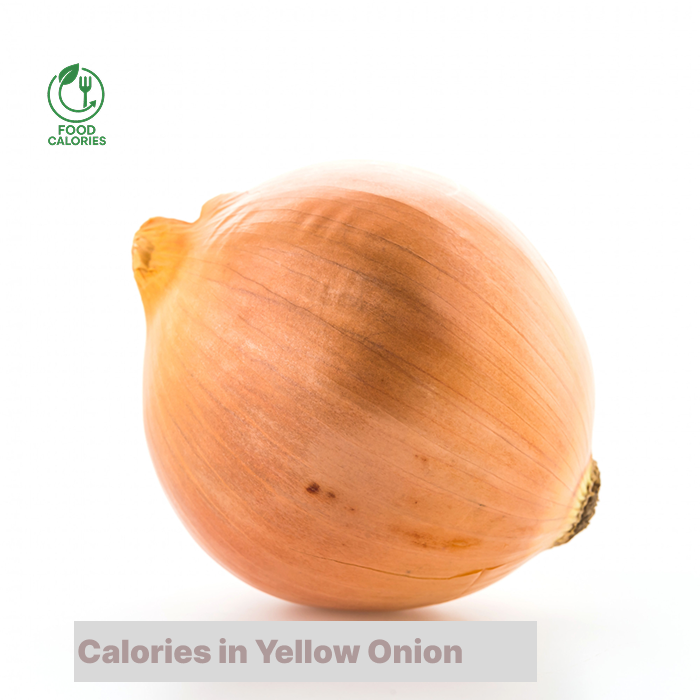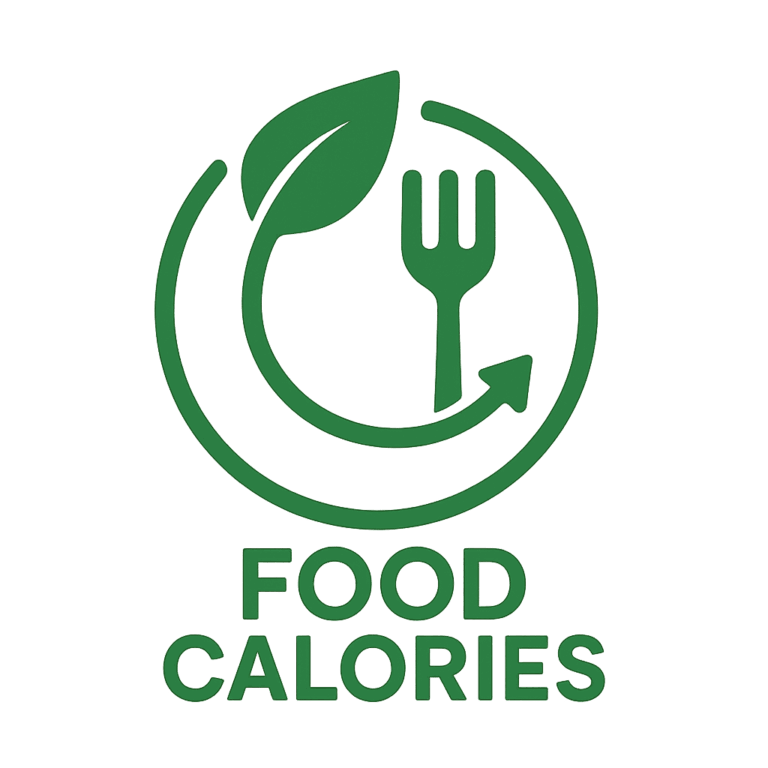Calories in Yellow Onion

Nutrition Facts
41
How many calories are in a yellow onion?
A yellow onion contains 44 kcal per 100 grams. A medium yellow onion typically weighs 110–125 grams and contains approximately 48–55 kcal. A large yellow onion can reach 150 grams and contain around 66 kcal.
- Calories in Yellow Onion
- How many calories are in a yellow onion?
- What is the calorie count of a yellow onion?
- How many calories does one yellow onion have?
- Yellow onion calories per 100g?
- Calories in 1 cup chopped yellow onion?
- Are yellow onions high in calories?
- How many kcal in a medium yellow onion?
- Yellow onion calories raw vs cooked?
- How many calories in a large yellow onion?
- How many calories in yellow onion for weight loss meals?
- Is yellow onion good for low-calorie diets?
- Can I eat yellow onion on a 1200-calorie diet?
- Calories in yellow onion used in soup?
- How many calories in yellow onion sautéed in olive oil?
The calorie count in yellow onions comes from carbohydrates, primarily sugars like glucose and fructose. These sugars contribute about 89% of the total calories. Protein content in yellow onions is low, at about 1.1 g per 100 g, and fat is nearly negligible, under 0.1 g.
Caloric content varies with weight. For example, small onions (70 g) provide about 31 kcal, while large ones (150 g) reach 66 kcal. Energy values stay stable unless the onion is sautéed or roasted with added oil or fat.
What is the calorie count of a yellow onion?
A yellow onion contains 44 kcal per 100 grams. A medium yellow onion typically contains between 48 and 55 kcal based on its weight. Large onions exceed 60 kcal depending on size.
This calorie count is based on raw, unseasoned onion. Heating without added fat does not change the calorie count. Cooking with oil increases the energy content significantly due to fat absorption.
Most calories in yellow onions come from carbohydrates. These carbohydrates include fructose, glucose, and sucrose. These sugars provide immediate energy, especially when consumed raw.
How many calories does one yellow onion have?
One medium yellow onion provides approximately 50 kcal. This estimate assumes a standard weight of 115 grams. Smaller onions contain fewer kcal, usually around 30 kcal, depending on exact size.
Larger onions contain more mass and proportionally higher carbohydrate content. One large yellow onion weighing 150 grams contains about 66 kcal. The variance is due to total sugar and water content.
Cooking changes mass but not intrinsic energy unless fat is introduced. Roasted or fried onions contain more kcal per gram due to oil. Caloric values apply only to raw or steamed onions.
Yellow onion calories per 100g?
Yellow onions contain 44 kcal per 100 grams. This value is for raw, chopped yellow onion. Carbohydrates account for 10.1 g per 100 g, contributing to the total calorie value.
Sugars like fructose and glucose dominate the carbohydrate profile. These sugars make up over 70% of the total carbohydrate mass. Water content is high, at 89%, which lowers calorie density.
Protein and fat contribute minimally to the kcal value. Yellow onions have about 1.1 g protein and under 0.1 g fat per 100 g. This nutritional profile is consistent across most onion varieties.
Calories in 1 cup chopped yellow onion?
One cup of chopped yellow onion weighs about 160 grams and contains 70 kcal. This portion contains about 16 g carbohydrates, including 7 g sugars and 2 g fiber. Water remains the dominant mass.
Carbohydrates are the primary source of energy. The cup contains glucose, sucrose, and fructose. These sugars provide fast energy absorption after consumption.
Protein in one cup is around 1.8 g, and fat remains under 0.1 g. Caloric value increases if onions are sautéed with oil. Cooking without fat retains the same kcal value.
Are yellow onions high in calories?
Yellow onions are low in calories. They contain only 44 kcal per 100 g. Compared to starchy vegetables, this is a minimal energy density.
Energy density remains low because of high water and fiber content. Water comprises about 89% of total mass. Fiber slows digestion and reduces net energy yield.
Compared to potatoes (77 kcal/100 g) or carrots (41 kcal/100 g), onions rank lower in calorie contribution. Yellow onions do not elevate total dietary energy unless paired with oils or sauces.
How many kcal in a medium yellow onion?
A medium yellow onion weighs around 115 grams and contains 50 kcal. Caloric value comes mostly from 10.5 g carbohydrates and 7 g water per 100 g. Fat and protein are negligible.
Size variations lead to kcal fluctuations. Small onions (85 g) contain about 37 kcal, while large onions (150 g) reach 66 kcal. These values depend on mass and water composition.
Only raw or steamed onions maintain these kcal values. Oil or butter raises the calorie count. Frying adds approximately 40 kcal per tablespoon of oil absorbed.
Yellow onion calories raw vs cooked?
Raw yellow onions contain 44 kcal per 100 g. Cooking without oil retains the same kcal per 100 g. Oil-based cooking increases total calories by fat contribution.
Sautéed onions in oil absorb up to 1 tbsp oil per cup, adding 119 kcal. Boiled onions retain same calorie profile due to absence of fat. Roasted onions without oil stay within ±5 kcal of raw state.
Cooking reduces water mass. Caloric density per gram increases after dehydration. For example, roasted onions lose 15% water, resulting in 10% higher kcal per gram.
How many calories in a large yellow onion?
A large yellow onion weighing 150 grams contains about 66 kcal. This value includes approximately 15 g of carbohydrates and high water mass. Protein and fat remain minor contributors.
Onions increase in calories with size. Medium onions (115 g) have 50 kcal, while extra-large (180 g) can exceed 80 kcal. The change is directly linked to total mass and sugar content.
All values apply to raw onion. Cooked onion caloric content rises only when fat is added. One tbsp of olive oil increases total calories by 119 kcal in sautéed servings.
How many calories in yellow onion for weight loss meals?
A medium yellow onion contains 44 calories per 110 grams. Caloric value of yellow onion is low across all weight categories. A small yellow onion (70g) has 28 calories, while a large one (150g) reaches 60 calories. Calorie density is 40 calories per 100g.
Caloric density matches requirements for weight loss meals. Weight loss meals typically limit each ingredient to under 50 calories per 100g. Yellow onion meets this threshold with 40 calories per 100g. Vegetables with similar density include zucchini and cucumbers.
Yellow onion supports caloric restriction in meal planning. Low-calorie vegetables like onions, celery, and bell peppers provide bulk without increasing energy intake. Yellow onion can be portioned precisely by weight if tracking calories in structured plans like 1200-calorie diets.
Is yellow onion good for low-calorie diets?
Yellow onion fits low-calorie diet rules with 40 calories per 100g. Calorie-dense vegetables are avoided in these diets. Yellow onion is below the 50-calorie threshold. For comparison, carrots and tomatoes are at 41 and 18 calories per 100g.
Low-calorie diets target energy control using low-density vegetables. Yellow onion satisfies this constraint with its high water content and minimal fat. Fiber content per 100g is 1.9g, which supports satiety. Semantically related foods include leek and shallot.
It can be used in high-volume, low-calorie dishes such as soups and stir-fries. Onions, bell peppers, and mushrooms are common vegetables used in such meals. Portion control ensures overall caloric compliance when combined with protein sources like turkey or tofu.
Can I eat yellow onion on a 1200-calorie diet?
Yes, yellow onion is suitable for a 1200-calorie diet due to its low energy value. A full cup (160g) of chopped onion contains 64 calories. That amount is under 6% of a 1200-calorie plan. A small portion of 50g adds only 20 calories.
Meal structuring in 1200-calorie plans relies on vegetables under 60 calories per portion. Yellow onion supports volumetric eating while maintaining low caloric intake. Meal examples include salads, egg scrambles, or chicken stir-fry with onions and broccoli.
Yellow onion provides flavor enhancement without exceeding limits. When cooked without oil or used raw, calorie addition is minimal. It supports high-density nutrition from lean proteins and whole grains if used with calorie-counting tools or diet logs.
Calories in yellow onion used in soup?
A half cup of yellow onion used in soup adds 32 calories. That portion weighs 80 grams. A smaller portion of 30g adds 12 calories. Caloric load stays minimal unless onion is fried in oil before adding to soup.
Soups often contain multiple vegetables. Onions, carrots, and celery are base aromatics, known as mirepoix. Mirepoix adds around 60–70 calories per cup if onions are included raw. Cooking method changes calorie content.
Yellow onion keeps the soup low-calorie when boiled or sautéed with water. Using non-fat broth and no added cream preserves low energy density. Vegetable soups with onions, zucchini, and tomatoes stay under 120 calories per bowl.
How many calories in yellow onion sautéed in olive oil?
Sautéing yellow onion in olive oil raises total calories significantly. One tablespoon of olive oil adds 119 calories. Cooking 100g of onion in 1 tablespoon totals 159 calories. Onion alone contributes 40, while oil adds the rest.
Oil retention affects final calories. Onions absorb roughly 50% of cooking oil. Using spray or half tablespoon reduces the caloric load. For example, using ½ tablespoon lowers the added oil calories to 60. Vegetables like zucchini or eggplant absorb even more oil.
Weight loss diets limit oil-based preparation. Choosing water sauté or dry roasting onions preserves low-calorie status. Recipes with raw or steamed onion maintain vegetable density without increasing fat intake unless using oil intentionally.
